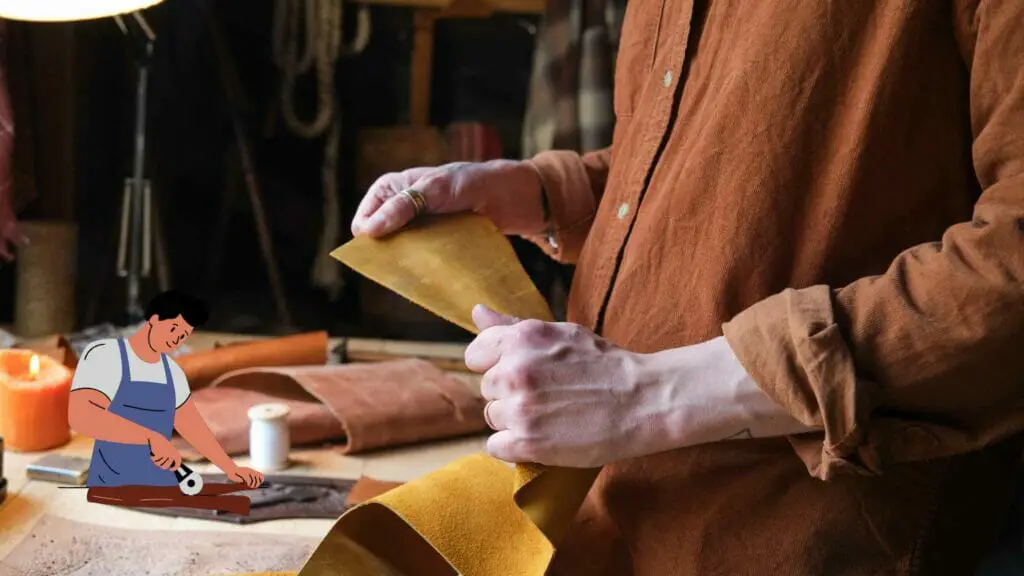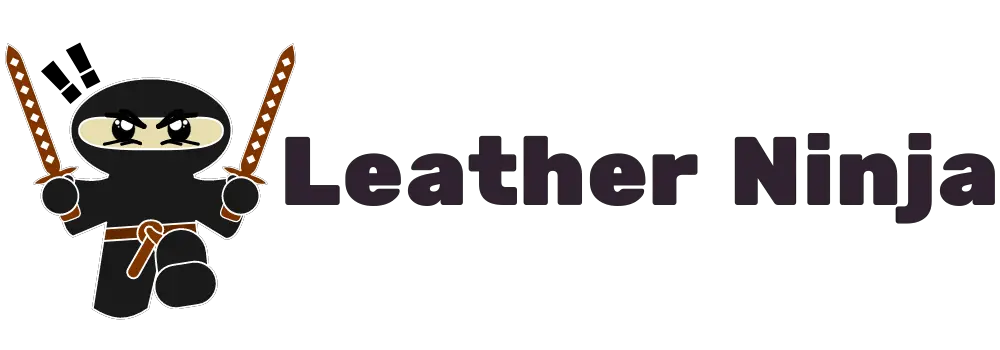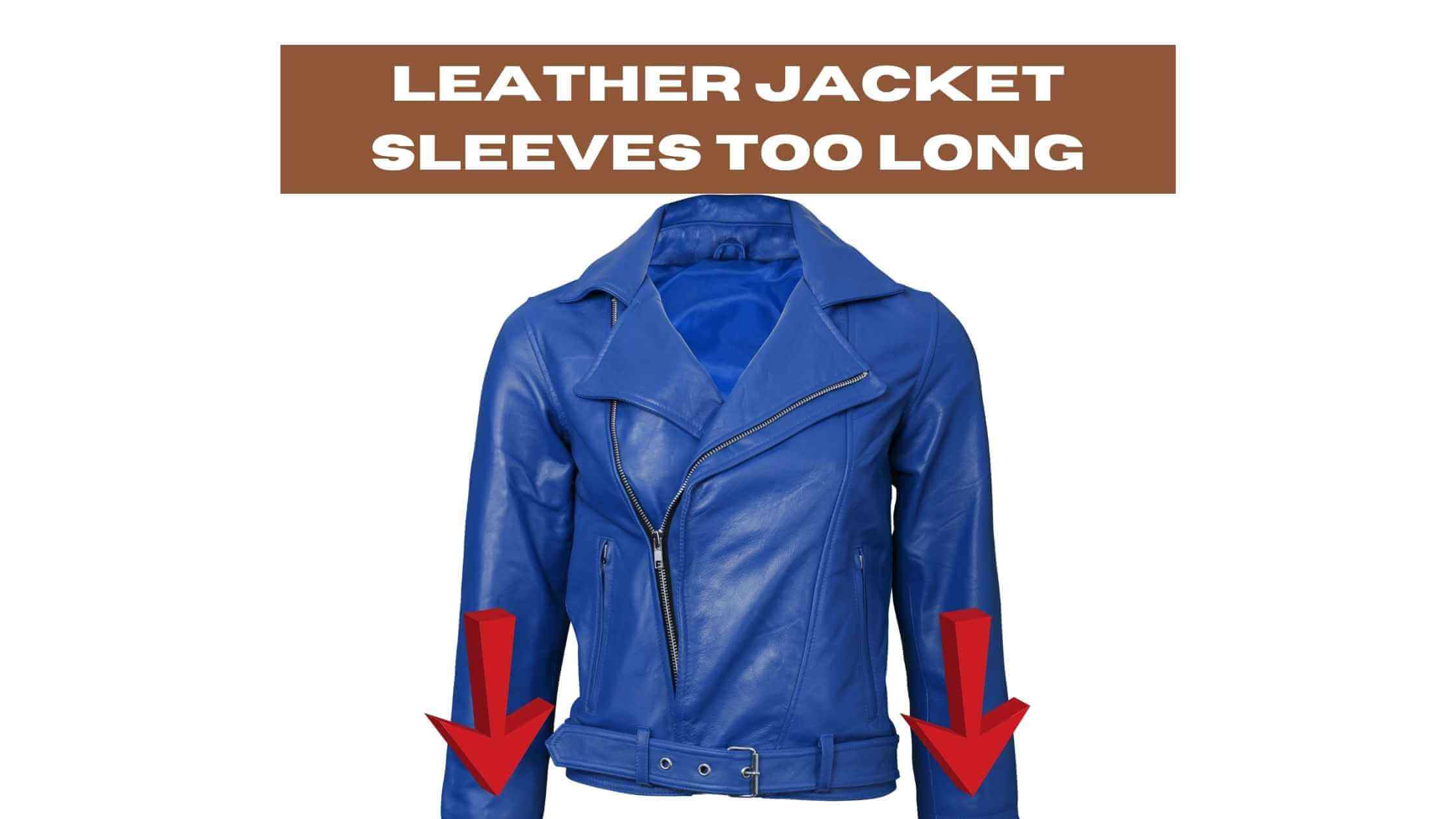Are you tired of struggling with too-long leather jacket sleeves? You’re not alone. Many people face the same problem, and it can be frustrating to deal with. Not only can it limit your range of motion, but it can also make your jacket look unattractive and inconvenient to wear.
When it comes to leather jacket sleeves, the type of leather can make a difference in how they fit. Some leathers are more flexible and stretchy, while others are stiffer and less forgiving.
It’s important to keep this in mind when choosing a leather jacket, as well as when considering alterations to the sleeves. Whether you opt for tailoring, cuffing, or folding the sleeves inward, it’s essential to find a solution that works for both your style and comfort.
Key Takeaways:
- The sleeves of a leather jacket should end at the wrist bone for a comfortable and stylish fit.
- When trying on a leather jacket, wear the appropriate clothing and test the mobility of the jacket to ensure a good fit.
- Measure your arms before purchasing a leather jacket to ensure the right sleeve length.
- Proper fit is crucial for leather jackets as they can affect your overall look and posture.
- If the sleeves of your leather jacket are too long, a tailor can help you make the necessary alterations.
- Working with leather requires the use of specialized tools and materials to avoid damaging the material.
- After altering the sleeves of your leather jacket, take proper care of it by keeping it dry, cleaning it properly, conditioning the leather, and storing it correctly.
Understanding Leather Jacket Sleeves
Leather jackets are a timeless fashion staple that can elevate any outfit. However, if the sleeves of your leather jacket are too long, it can ruin the entire look. In this section, we will discuss everything you need to know about leather jacket sleeves, including sleeve length, why they matter, and how to ensure a perfect fit.
The sleeves of a leather jacket should end at your wrist bone. Any shorter, and your shirt or undershirt will be visible, which can look awkward. Any longer, and the jacket will look too big, and it will be challenging to move your arms freely. It is essential to get the sleeve length right to ensure a comfortable and stylish fit.
When trying on a leather jacket, make sure to wear a shirt or sweater that you would typically wear with the jacket. This will give you a better idea of how the sleeves will fit in real life. Also, make sure to move your arms around to test the mobility of the jacket. If you can’t move your arms comfortably, then the jacket is too tight, and you should consider a larger size.
It is also important to note that leather jackets tend to stretch over time. So, if the sleeves are a little snug when you first try on the jacket, they will likely stretch out and become more comfortable over time. However, if the sleeves are too long, they will not magically shrink, and you will be stuck with an ill-fitting jacket.
To ensure a perfect fit, it is essential to measure your arms before purchasing a leather jacket. Measure from the center of your back to your wrist bone, and add an inch to this measurement. This will give you the ideal sleeve length for your leather jacket. It is also crucial to consider the style of the jacket when choosing sleeve length. For example, a bomber jacket may have shorter sleeves than a classic motorcycle jacket.
The Importance of Proper Fit
When it comes to leather jackets, the fit is everything. A jacket that doesn’t fit can ruin your entire look, no matter how stylish or expensive it is. On the other hand, a perfectly fitting leather jacket can elevate your style to a whole new level.
The key to achieving a perfect fit is to pay attention to the details. Make sure the jacket fits well in the waist, elbow, wrist, and shoulder areas. The sleeves should end at your wrist, and the jacket should not be too tight or too loose in any area.
If you’re not sure about your measurements, take the time to measure yourself or visit a tailor. A good tailor can make minor adjustments to ensure your jacket fits perfectly.
A jacket that doesn’t fit can be uncomfortable to wear, and it can also affect your posture. A jacket that is too tight can restrict your movement, while a jacket that is too loose can make you look sloppy.
Proper fit is especially important when it comes to leather jackets because they are an investment piece. A well-fitted leather jacket can last for years, while a jacket that doesn’t fit may end up in the back of your closet.
How to Measure for Sleeve Alteration
If you’ve recently purchased a leather jacket and find that the sleeves are too long, don’t worry. It’s a common issue that can be easily fixed. Before you take your jacket to a tailor, you’ll need to measure the sleeves to determine how much they need to be shortened. Here’s how to do it:
- Start by putting on the jacket and standing up straight with your arms at your sides.
- Measure from the shoulder seam to the wrist bone. This will give you the overall length of the sleeve.
- If the sleeve is only slightly too long, you can have it shortened by half an inch (1.27 cm) to one inch (2.54 cm). If it’s significantly too long, you may need to have it shortened by more.
- When measuring, make sure to take into account any design elements on the sleeve, such as zippers or cuffs.
- If you’re unsure about how much to shorten the sleeves, it’s always better to err on the side of caution and have them shortened slightly less than you think is necessary. You can always have them shortened further if needed.
Remember that the length of the sleeve should end just past your wrist bone, not at your waistline. You want to make sure that the sleeves are not too short or too long. If you’re unsure about how the sleeves should fit, try on a few different jackets to get a sense of what looks best on you.
Process of Shortening Leather Jacket Sleeves
If you’ve purchased a leather jacket with sleeves that are too long, don’t worry. Shortening the sleeves of a leather jacket is a simple alteration that can be done by a tailor or even at home. Here is a step-by-step process to shorten your leather jacket sleeves.
First, decide how much you want to shorten the sleeves. You can use a measuring tape to measure the length of the sleeve from the shoulder seam to the cuff. Write down the desired length of the sleeve on a piece of paper.
Next, fold the sleeve up to the desired length. Use a paper clip or binder clip to hold it in place. You can also make a mark with a chalk or a pin to indicate where you want to cut the sleeve.
Now, use a seam ripper or a pair of blunt scissors to remove the stitching at the bottom of the sleeve. Be careful not to cut the leather of the jacket. You should be able to separate the lining from the leather at this point.
Cut the sleeve to the desired length. Use sharp scissors to ensure a clean cut. If the jacket has lining, cut it to the same length as the leather.
Finally, sew the lining and the leather back together. Use a needle and thread that matches the color of the jacket. Make sure the stitches are small and neat. If you’re not confident in your sewing skills, take the jacket to a professional tailor.
Working with Leather
Working with leather can be a fun and rewarding experience. Whether you are repairing a leather jacket or creating a new one, there are a few things to keep in mind to ensure your project is a success.
When working with leather, it is important to use the right tools and materials. A good quality leather needle is essential, as it will help prevent damage to the leather and ensure smooth stitching. Make sure your sewing machine is equipped with a leather needle, and set the stitch length to a longer setting to avoid perforating the leather.
If you need to make holes in the leather, use a leather punch or awl. This will create clean and precise holes without damaging the leather. When stitching, use a strong and durable thread such as nylon or polyester.
When measuring and cutting leather, use a ruler or measuring tape to ensure accurate measurements. It is also important to be aware of the grain of the leather and cut accordingly. The grain is the natural pattern on the surface of the leather, and it is important to cut with the grain to ensure a consistent look.
If you are new to working with leather, it can be helpful to practice on scraps before starting your project. This will help you get a feel for the material and improve your technique.
Role of a Tailor in Sleeve Alteration

If you find that the sleeves of your leather jacket are too long, a tailor can help you make the necessary alterations. A tailor is a professional who can help you make adjustments to your clothing to ensure that they fit you perfectly. A leather tailor, in particular, has expertise in handling leather and can help you make the necessary alterations without damaging the material.
When it comes to sleeve alteration, a tailor can help you achieve the perfect fit by shortening the sleeves to the desired length. They can also help you make adjustments to the cuffs to ensure that they fit snugly around your wrists. A tailor can make these adjustments by cutting the excess fabric and reattaching the cuffs to the sleeves.
It is important to note that altering leather sleeves can be a delicate process that requires special tools and expertise. A tailor who specializes in leather alterations will have the necessary skills and equipment to make the necessary adjustments without damaging the material.
When working with a tailor, it is important to communicate your preferences clearly. Let them know how much you would like the sleeves to be shortened and how you would like the cuffs to fit. You can also bring in a reference jacket that fits you well to help the tailor understand your preferences.
In addition to sleeve alteration, a tailor can also help you make other adjustments to your leather jacket, such as adjusting the length or the fit. They can also help you replace zippers or buttons that may be damaged or worn out.
Caring for Your Altered Leather Jacket
Now that you have altered your leather jacket sleeves to the perfect length, it’s essential to take good care of it to ensure it lasts for years to come. Here are some tips on how to care for your altered leather jacket:
Keep it Dry
Leather is a porous material, which means it can absorb water and become damaged if it gets drenched. If your jacket gets wet, gently pat it dry with a clean towel and let it air dry away from direct heat sources. Never use a hairdryer or other heat sources to dry your leather jacket, as this can cause the leather to crack or become stiff.
Clean it Properly
To keep your leather jacket looking its best, it’s essential to clean it regularly. Use a soft-bristled brush or a damp cloth to remove any dirt or dust from the surface of the jacket. If your jacket needs a deeper clean, use a leather cleaning solution specifically designed for leather jackets. Always test the cleaner on a small, inconspicuous area of the jacket first to ensure it doesn’t cause any discoloration or damage.
Condition the Leather
Leather jackets need to be conditioned regularly to keep them soft and supple. Apply a leather conditioner to your jacket every few months or as needed to keep the leather moisturized. Be sure to choose a conditioner that’s specifically designed for leather jackets and follow the manufacturer’s instructions.
Store it Properly
When you’re not wearing your leather jacket, it’s essential to store it properly to prevent damage. Hang your jacket on a sturdy hanger in a cool, dry place away from direct sunlight. Avoid storing your jacket in a plastic bag or other airtight container, as this can cause the leather to dry out and crack.
Common Issues and Solutions
When it comes to leather jacket sleeves, there are a few common issues that you may encounter. Fortunately, there are also some simple solutions to these problems.
One issue that you may experience is sleeves that shorten with wear. This can happen due to the natural stretching and settling of the leather over time. To prevent this from happening too quickly, try not to wear your leather jacket every day, and avoid sitting or leaning on your arms while wearing it.
Another issue that you may encounter is extra length in the sleeves. This can be solved by having the sleeves altered by a professional tailor. However, if you don’t want to spend the money on alterations, there are a few DIY solutions you can try.
One DIY solution is to use pins to temporarily shorten the sleeves. Simply fold the excess fabric under and pin it in place. This can give you an idea of how the jacket will look with shorter sleeves before you commit to alterations.
If you’re hesitant to alter your leather jacket, another solution is to roll up the sleeves. This is a great option if you like the look of a rolled sleeve, and it can also help you stay cool on warmer days.
Finally, if you notice any wrinkles or creases in your leather jacket sleeves, try using a steamer to smooth them out. This can help to restore the appearance of your jacket and prevent further damage.
FAQ: Leather Jacket Sleeves Too Long
How do I shorten the sleeves of my leather jacket?
To shorten the sleeves of your leather jacket, it’s best to take it to a professional tailor who specializes in working with leather garments. They will be able to make the sleeves the desired length without causing any damage to the jacket.
Can I shorten the sleeves of my leather jacket myself?
Unless you have experience working with leather and have the necessary tools, it is not recommended to try shortening the sleeves yourself. Leather jackets require special care and expertise to avoid any mishaps.
What type of leather is commonly used to make leather jackets?
Cowhide is one of the most common types of leather used to make leather jackets. It is known for its durability and toughness, making it an ideal choice for outerwear.
Can I add length to the sleeves of my leather jacket?
It is possible to add length to the sleeves of your jacket, but this is a more complex alteration that should be done by a professional tailor who specializes in working with leather garments. They will be able to match the leather and stitch it seamlessly to the existing sleeve.
What should I do if the sleeves of my leather jacket are too long?
If the sleeves of your leather jacket are too long, it’s best to take it to a professional tailor who can hem them to the desired length. They will be able to ensure that the sleeves are shortened evenly and maintain the overall look of the jacket.
Is it possible to shorten the sleeves of a leather jacket that is too big?
Yes, it is possible to shorten the sleeves of a leather jacket that is too big. A professional tailor can take in the sleeves to achieve a better fit on your body.
Can I make holes in leather to shorten the sleeves of my leather jacket?
It is not recommended to make holes in leather to shorten the sleeves of your leather jacket. This can weaken the garment and cause further damage. It is best to leave alterations to a professional tailor.
What should I do if my leather jacket sleeves shorten with wear?
If the sleeves of your leather jacket shorten with wear, it is best to take it to a professional tailor who can assess the situation. They will be able to determine the cause of the issue and recommend the appropriate solution.
How can I avoid having long sleeves on my leather jacket?
To avoid having long sleeves on your leather jacket, it is important to choose the correct size when purchasing. Ensure that the jacket fits properly in the shoulders and sleeves to avoid any issues with the length.
What should I do if the sleeves of my leather jacket are too short?
If the sleeves of your leather jacket are too short, it’s best to consult with a professional tailor who can assess the situation. They may be able to add length to the sleeves by utilizing extra material or finding a suitable solution.

